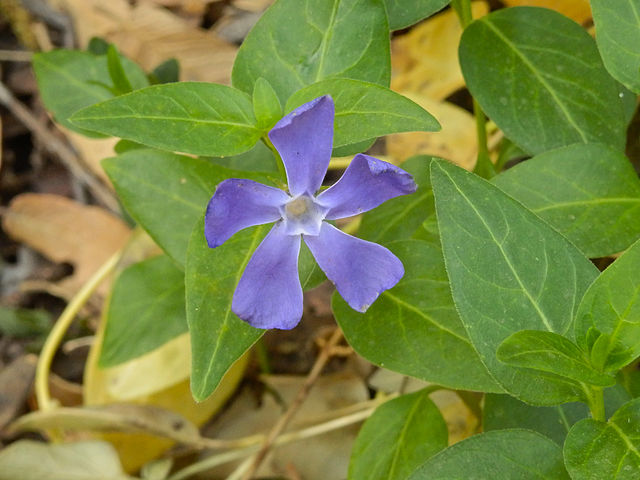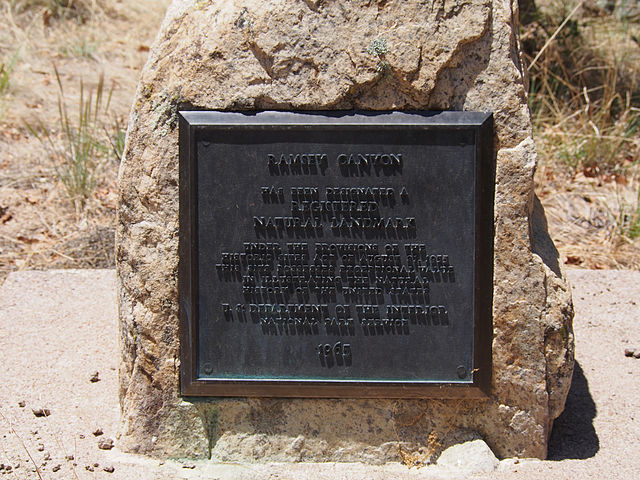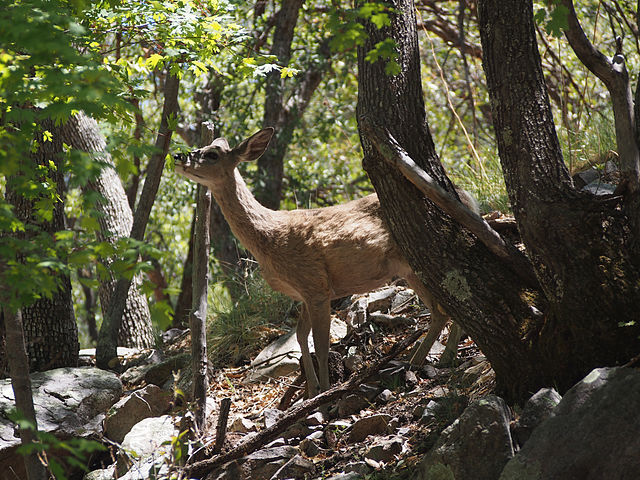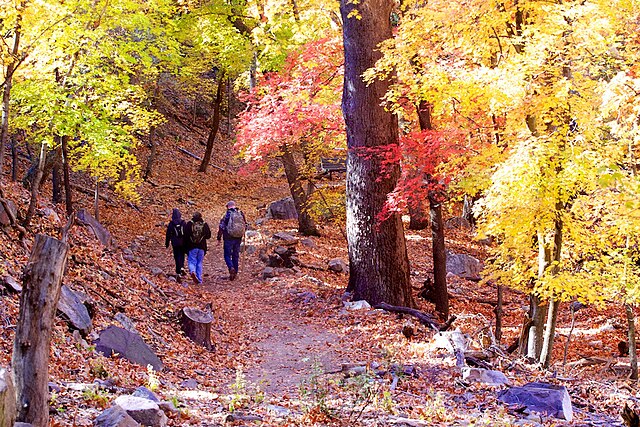Have you ever wondered where you can escape Arizona’s desert heat and immerse yourself in a cool, lush canyon filled with the sounds of flowing water and hundreds of hummingbirds? Look no further than Ramsey Canyon Preserve, one of Arizona’s most enchanting natural treasures. This remarkable destination offers visitors a unique glimpse into a rare ecosystem that thrives in the heart of the Sonoran Desert.
What Makes Ramsey Canyon Preserve Special?
Ramsey Canyon Preserve isn’t your typical Arizona desert landscape. This 300-acre sanctuary, managed by The Nature Conservancy, protects one of the most biodiverse areas in the Southwest. The preserve serves as a crucial habitat for numerous species of plants and animals, many of which are found nowhere else in the United States.
A Natural Oasis in the Desert
Picture this: you’re walking through a shaded canyon where towering sycamore trees create a natural canopy overhead, while a crystal-clear stream babbles beside the trail. The air is noticeably cooler than the surrounding desert, and the sound of water creates a peaceful ambiance that instantly relaxes your mind. This is the magic of Ramsey Canyon – a true oasis that seems almost out of place in the arid landscape of southeastern Arizona.
The preserve’s unique microclimate is created by its elevation, which ranges from 5,400 to 7,000 feet, and the year-round stream that flows through the canyon. This combination creates a riparian ecosystem that supports an incredible variety of plant and animal life, making it a biological island in the desert.
The Hummingbird Capital of the World
What truly sets Ramsey Canyon apart is its reputation as the “Hummingbird Capital of the World.” This isn’t just marketing hype – it’s a scientifically recognized fact. The preserve hosts 15 different species of hummingbirds throughout the year, including some that are extremely rare in the United States. You might catch a glimpse of the magnificent Blue-throated Hummingbird, the tiny Broad-tailed Hummingbird, or even the elusive Violet-crowned Hummingbird.
The abundance of hummingbirds is made possible by the diverse flowering plants that bloom throughout the year, providing a constant source of nectar. Native plants like cardinal flower, bee balm, and various species of sage create a natural buffet that attracts these tiny, iridescent jewels.
Where is Ramsey Canyon Preserve Located?

Ramsey Canyon Preserve is nestled in the Huachuca Mountains of southeastern Arizona, approximately 90 miles southeast of Tucson. The preserve is situated near the town of Sierra Vista, making it easily accessible for day trips or longer visits to the region.
Getting to Ramsey Canyon from Tucson
The journey to Ramsey Canyon from Tucson is relatively straightforward and offers scenic views of the Sonoran Desert along the way. Take I-10 East for about 80 miles, then exit at Highway 90 toward Sierra Vista. Follow Highway 90 for approximately 25 miles, then turn south on Ramsey Canyon Road. The preserve entrance is about 5 miles down this scenic mountain road.
The drive takes approximately 2 hours from Tucson, making it perfect for a day trip. However, many visitors find the preserve so captivating that they prefer to stay overnight in the area to fully experience its magic.
Accessibility and Parking Information
One important aspect of visiting Ramsey Canyon is understanding its limited capacity. The preserve restricts the number of visitors to protect the fragile ecosystem and ensure a quality experience for everyone. Only 30 parking spaces are available, and these can fill up quickly, especially during peak season from March through September.
The parking area is small but well-maintained, with restroom facilities and information boards. From the parking area, it’s a short walk to the visitor center where you can learn more about the preserve’s history, wildlife, and conservation efforts.
Best Time to Visit Ramsey Canyon Preserve
Timing your visit to Ramsey Canyon can significantly impact your experience. While the preserve is open year-round (except for Thanksgiving and Christmas), each season offers unique advantages for different types of visitors.
Spring: The Awakening Season
Spring (March to May) is arguably the best time to visit Ramsey Canyon. The weather is mild, with temperatures ranging from the 60s to 70s Fahrenheit. This is when many wildflowers begin to bloom, creating a colorful carpet along the trails. Spring also marks the beginning of hummingbird migration, as several species return from their winter homes in Mexico.
During spring, you’ll have the best chance of seeing the widest variety of hummingbird species, as both resident and migratory species are active. The stream flow is usually at its strongest from snowmelt in the mountains, creating beautiful waterfalls and pools throughout the canyon.
Summer: Peak Hummingbird Activity
Summer (June to August) brings the highest diversity of hummingbirds to the preserve. This is when you’re most likely to spot some of the rarer species, including the Blue-throated Hummingbird and the Broad-billed Hummingbird. However, be prepared for afternoon thunderstorms, which are common in the monsoon season.
The summer months also bring lush vegetation and the peak flowering of many native plants. While temperatures can be warm, the canyon’s shaded environment and higher elevation keep it much cooler than the surrounding desert.
Fall: Autumn Colors and Migration
Fall (September to November) offers a different kind of beauty as the canyon’s deciduous trees put on a spectacular display of autumn colors. The sycamores and cottonwoods turn golden yellow, creating a stunning contrast against the evergreen oaks and pines.
This is also when many hummingbird species begin their migration south, creating unique viewing opportunities as they prepare for their long journey to Mexico and Central America.
Winter: Quiet Beauty
Winter (December to February) is the quietest time at Ramsey Canyon, but it has its own special charm. While many of the migratory hummingbirds have departed, several species remain year-round, including the Anna’s Hummingbird and the Broad-tailed Hummingbird. The bare trees allow for better visibility of wildlife, and the cooler temperatures make hiking more comfortable.
What to Expect During Your Visit
Your visit to Ramsey Canyon will begin at the visitor center, where knowledgeable staff can provide you with trail maps, current wildlife information, and safety guidelines. The center also features educational displays about the preserve’s ecosystem and conservation efforts.
The Main Trail Experience
The main trail through Ramsey Canyon is approximately 1.5 miles long and follows the stream through the heart of the preserve. This well-maintained trail is suitable for most fitness levels, though there are some rocky sections and stream crossings that require careful footing.
As you walk along the trail, you’ll pass through different habitat zones, from riparian woodland near the stream to oak woodland on the hillsides. The trail is lined with interpretive signs that help you identify the various plants and understand the ecosystem’s complexity.
Wildlife Viewing Opportunities
While hummingbirds are the main attraction, Ramsey Canyon is home to over 170 species of birds, making it a paradise for birdwatchers. You might spot elegant trogons, painted redstarts, or the elusive coatimundi. The preserve is also home to various mammals, including white-tailed deer, javelinas, and the occasional mountain lion (though sightings are rare).
The best wildlife viewing typically occurs in the early morning and late afternoon when animals are most active. Bring binoculars and move slowly and quietly to maximize your chances of spotting wildlife.
Photography Tips and Best Spots
Ramsey Canyon offers numerous opportunities for photography, from macro shots of flowers and insects to stunning landscape views. The visitor center area, with its numerous hummingbird feeders, provides excellent opportunities for bird photography. The best lighting for photography is usually in the early morning or late afternoon when the harsh desert sun is filtered by the canyon walls.
Some of the most photogenic spots include the area around the bridges over the stream, the waterfall about half a mile up the main trail, and the open meadow areas where wildflowers bloom in spring.
Hiking Trails and Difficulty Levels
The trail system at Ramsey Canyon is relatively simple but incredibly rewarding. The preserve was designed to protect the sensitive ecosystem while still allowing visitors to experience its beauty.
Ramsey Canyon Trail Details
The main Ramsey Canyon Trail is a 3-mile round-trip hike that gains about 1,000 feet in elevation. The trail is considered moderate in difficulty, with some steep sections and rocky terrain. The first mile of the trail is the most accessible, following the stream through shaded riparian forest.
As you progress up the canyon, the trail becomes more challenging, with steeper grades and more rugged terrain. However, the rewards are worth the effort, as you’ll encounter beautiful waterfalls, diverse plant communities, and stunning views of the surrounding mountains.
Side Trails and Exploration Options
While the main trail is the primary route through the preserve, there are several short side trails that lead to specific points of interest. These include paths to overlooks, small waterfalls, and areas with unique plant communities.
It’s important to stay on designated trails to protect the fragile ecosystem and for your own safety. The preserve staff can provide information about any seasonal trail closures or special conditions.
The Famous Hummingbird Viewing Areas

The highlight of any visit to Ramsey Canyon is the incredible hummingbird viewing opportunities. The preserve has created several areas specifically designed to maximize your chances of seeing these amazing birds.
Visitor Center Feeders
The area around the visitor center features multiple hummingbird feeders that are maintained by preserve staff. These feeders are strategically placed to provide optimal viewing opportunities while ensuring the birds’ safety. The feeders are most active in the early morning and evening when the birds are feeding most actively.
Comfortable seating areas are provided near the feeders, allowing you to relax and watch the constant activity. The variety of species that visit the feeders changes throughout the year, with spring and summer offering the greatest diversity.
Best Times for Hummingbird Watching
Hummingbird activity is highest during the cooler parts of the day, typically from sunrise until about 10 AM and again from 4 PM until sunset. During the heat of the day, the birds often seek shade and are less active.
The best strategy is to arrive early in the morning when the parking lot opens and spend time at the feeders before hiking the trail. This allows you to see the greatest variety of species and observe their behavior when they’re most active.
Planning Your Visit: Essential Information
To make the most of your visit to Ramsey Canyon, it’s important to plan ahead and come prepared. The preserve has specific rules and regulations designed to protect the ecosystem and ensure a quality experience for all visitors.
Admission Fees and Hours
The preserve is open Thursday through Monday from 8 AM to 5 PM (closed Tuesday and Wednesday). Admission fees are $5 for adults and free for children under 12. The limited parking means that the preserve can only accommodate 30 vehicles at a time, so arriving early is strongly recommended.
During peak season (March through September), the parking lot often fills by 8:30 AM, and once it’s full, no additional visitors are allowed until someone leaves. This policy helps protect the fragile ecosystem and ensures a quality experience for visitors.
What to Bring and Wear
Proper preparation is essential for a comfortable visit to Ramsey Canyon. Wear sturdy hiking boots with good traction, as the trail can be rocky and stream crossings can be slippery. Dress in layers, as temperatures can vary significantly between the parking area and the upper canyon.
Bring plenty of water, especially during summer months, as the combination of elevation and physical activity can lead to dehydration. A hat and sunscreen are also important, as some sections of the trail are exposed to direct sunlight.
Guided Tours vs. Self-Guided Exploration
While the preserve doesn’t offer regular guided tours, the knowledgeable staff at the visitor center can provide valuable information about current wildlife activity, trail conditions, and what to look for during your visit. They can also suggest the best areas for specific interests, such as bird watching or photography.
Many visitors find that taking their time and exploring at their own pace is the most rewarding way to experience the preserve. The interpretive signs along the trail provide excellent information about the ecosystem and its inhabitants.
Nearby Attractions and Activities

Ramsey Canyon is located in an area rich with natural and cultural attractions, making it an excellent base for exploring southeastern Arizona.
Other Birding Hotspots
The region around Ramsey Canyon is known as one of the premier birding destinations in North America. Other nearby locations include Madera Canyon, famous for its elegant trogons and painted redstarts, and the San Pedro Riparian National Conservation Area, which hosts over 350 bird species.
These locations are all within a short drive of Ramsey Canyon and offer different habitats and species, making it possible to have a diverse birding experience over several days.
Historic Sites in the Area
The area around Ramsey Canyon has a rich history, including several historic sites worth visiting. The nearby town of Bisbee, a former mining town, offers well-preserved Victorian architecture and fascinating museums. The Coronado National Memorial, located just a few miles away, commemorates the first major European expedition into the American Southwest.
These historic sites provide an interesting contrast to the natural beauty of Ramsey Canyon and help tell the story of the region’s complex history.
Conservation Efforts and Preservation
Ramsey Canyon Preserve exists thanks to the dedicated conservation efforts of The Nature Conservancy and the support of many individual donors and volunteers.
The Nature Conservancy’s Role
The Nature Conservancy has owned and managed Ramsey Canyon Preserve since 1970, when they recognized the unique value of this ecosystem. Their management philosophy focuses on protecting the natural processes that maintain the preserve’s biodiversity while allowing for limited, sustainable public access.
The organization conducts ongoing research to better understand the ecosystem and monitor the health of the various plant and animal populations. This research helps guide management decisions and ensures that the preserve remains protected for future generations.
How Visitors Can Help Protect the Preserve
Visitors play a crucial role in the preservation of Ramsey Canyon. By following the rules and staying on designated trails, you help protect the fragile ecosystem. Simple actions like not disturbing wildlife, not picking flowers, and packing out all trash help ensure that the preserve remains pristine.
Many visitors also choose to support the preserve through donations or by purchasing items from the visitor center. These contributions help fund ongoing conservation efforts and educational programs.
Accommodation Options Near Ramsey Canyon
While Ramsey Canyon can be visited as a day trip from Tucson or other nearby cities, many visitors prefer to stay in the area to fully experience the region’s natural beauty.
Camping and RV Options
Several campgrounds are located within a short drive of Ramsey Canyon, including facilities at Coronado National Memorial and various state parks. These campgrounds offer a chance to experience the natural beauty of the region while being close to the preserve.
The nearby town of Sierra Vista also has several RV parks that cater to visitors exploring the region’s natural attractions.
Nearby Hotels and Lodging
Sierra Vista, located about 10 miles from the preserve, offers a variety of accommodation options, from budget motels to more upscale hotels. The town of Bisbee, about 20 miles away, offers unique lodging options in historic buildings and bed-and-breakfasts.
For a more immersive experience, consider staying at one of the several guest ranches in the area, which offer a chance to experience the region’s western heritage while being close to natural attractions.
Conclusion
Ramsey Canyon Preserve represents one of Arizona’s most precious natural treasures, offering visitors a rare glimpse into a unique ecosystem that thrives in the heart of the Sonoran Desert. Whether you’re a dedicated birder hoping to spot rare hummingbird species, a nature lover seeking a peaceful escape from the desert heat, or a photographer looking for stunning natural beauty, Ramsey Canyon delivers an unforgettable experience.
The preserve’s commitment to conservation, combined with its limited access policy, ensures that this special place remains protected for future generations to enjoy. By visiting Ramsey Canyon, you’re not just experiencing one of Arizona’s most beautiful natural areas – you’re also supporting important conservation efforts that help protect biodiversity in the Southwest.
Remember to plan your visit carefully, arrive early to secure parking, and come prepared for a moderate hike through varied terrain. Most importantly, take time to simply sit quietly and observe the incredible diversity of life that calls Ramsey Canyon home. In a world that often moves at breakneck speed, this peaceful canyon offers a chance to slow down and reconnect with the natural world.
Frequently Asked Questions
1. How long should I plan to spend at Ramsey Canyon Preserve?
Most visitors spend 3-4 hours at the preserve, which allows time to enjoy the hummingbird viewing area, hike the main trail, and explore the visitor center. However, many bird enthusiasts and photographers prefer to spend a full day to maximize their wildlife viewing opportunities.
2. Is Ramsey Canyon suitable for children?
Yes, the preserve is family-friendly, though children should be closely supervised, especially near the stream and on rocky sections of the trail. The first mile of the trail is easily accessible for most ages, and many children are fascinated by the hummingbirds at the visitor center feeders.
3. Can I bring my dog to Ramsey Canyon Preserve?
No, pets are not allowed in the preserve to protect the wildlife and maintain the peaceful environment that makes the area so special for both animals and visitors.
4. Are there restroom facilities at the preserve?
Yes, restroom facilities are available at the visitor center near the parking area. However, there are no facilities along the trail itself, so plan accordingly before beginning your hike.
5. What is the best way to photograph hummingbirds at the preserve?
The best hummingbird photography opportunities are at the visitor center feeders, especially in the early morning and late afternoon. Use a fast shutter speed (1/1000 or faster) to capture the rapid wing movement, and be patient as the birds may take time to become comfortable with your presence.

